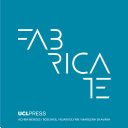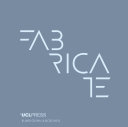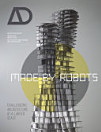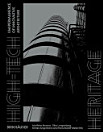Fabricate 2014: Negotiating Design & Making
Fabio Gramazio · Matthias Kohler · Silke Langenberg
aug 2017 · Fabricate Boek 2 · UCL Press
4,0star
2 reviewsreport
E-boek
315
Pagina's
family_home
Geschikt
info
reportBeoordelingen en reviews worden niet geverifieerd. Meer informatie
Over dit e-boek
FABRICATE is an international peer reviewed conference that takes place every three years with a supporting publication on the theme of Digital Fabrication. Discussing the progressive integration of digital design with manufacturing processes, and its impact on design and making in the 21st century, FABRICATE brings together pioneers in design and making within architecture, construction, engineering, manufacturing, materials technology and computation. Discussion on key themes includes: how digital fabrication technologies are enabling new creative and construction opportunities from component to building scales, the difficult gap that exists between digital modelling and its realisation, material performance and manipulation, off-site and on-site construction, interdisciplinary education, economic and sustainable contexts. FABRICATE features cutting-edge built work from both academia and practice, making it a unique event that attracts delegates from all over the world. FABRICATE 2011, 2014 and 2017 are now all available to download free from UCL Press.
Beoordelingen en reviews
4,0
2 reviews
Over de auteur
Fabio Gramazio is an architect with multidisciplinary interests ranging from computational design, robotic control and fabrication to material innovation. In 2000, he co-founded the architecture practice Gramazio & Kohler, where numerous award-wining designs have been realised, integrating novel architectural designs into a contemporary building culture. Built work ranges from international exhibitions, private and public buildings to large-scale urban interventions. Opening the world’s first architectural robotic laboratory at ETH Zurich, Gramazio & Kohler’s research has been formative for the field of digital architecture, setting precedence and de facto creating a new research field merging advanced architectural design and additive fabrication processes through the customized use of industrial robots. This ranges from 1:1 prototypical installations to robotic fabrication on a large scale, which is being explored at the SEC Future Cities Laboratory. Fabio and his partner Matthias Kohler were awarded Swiss Art Awards, the Global Holcim Innovation Prize and the Acadia Award for Emerging Digital Practice. Their innovative explorations have contributed to numerous exhibitions around the world, such as the 2008 Architectural Biennial in Venice, the Storefront Gallery for Art and Architecture in New York 2009 or Flight Assembled Architecture at the FRAC Centre Orléans in 2011. Their work has been published in a large number of journals, books and mass media, and has been first documented in the book Digital Materiality in Architecture in 2008. Their recent research is outlined and theoretically framed in the book The Robotic Touch – How Robots Change Architecture, released in 2014. Together with leading researchers in architecture, material sciences, computation and robotics, they have just launched the first architectural National Centre of Competence in Research on Digital Fabrication. Matthias Kohler is an architect with multidisciplinary interests ranging from computational design, robotic control and fabrication to material innovation. In 2000, he co-founded the architecture practice Gramazio & Kohler, where numerous award-wining designs have been realised, integrating novel architectural designs into a contemporary building culture. Built work ranges from international exhibitions, private and public buildings to large-scale urban interventions. Opening the world’s first architectural robotic laboratory at ETH Zurich, Gramazio & Kohler’s research has been formative for the field of digital architecture, setting precedence and de facto creating a new research field merging advanced architectural design and additive fabrication processes through the customized use of industrial robots. This ranges from 1:1 prototypical installations to robotic fabrication on a large scale, which is being explored at the SEC Future Cities Laboratory. Matthias and his partner Fabio Gramazio were awarded Swiss Art Awards, the Global Holcim Innovation Prize and the Acadia Award for Emerging Digital Practice. Their innovative explorations have contributed to numerous exhibitions around the world, such as the 2008 Architectural Biennial in Venice, the Storefront Gallery for Art and Architecture in New York 2009 or Flight Assembled Architecture at the FRAC Centre Orléans in 2011. Their work has been published in a large number of journals, books and mass media, and has been first documented in the book Digital Materiality in Architecture in 2008. Their recent research is outlined and theoretically framed in the book The Robotic Touch – How Robots Change Architecture, released in 2014. Together with leading researchers in architecture, material sciences, computation and robotics, they have just launched the first architectural National Centre of Competence in Research on Digital Fabrication. Silke Langenberg is a senior researcher at the Chair of Architecture and Digital Fabrication, Institute of Technology in Architecture at ETH Zurich. Between 2011 and 2013 she was based in Singapore several times to research at the Singapore ETH Centre for Global Environmental Sustainability. From 2006 to 2011 she was Researcher at the Institute of Historic Building Research and Conservation of ETH Zurich. Silke has studied architecture at the Universities of Dortmund and Venice. She received a Scholarship for extraordinary achievements for her PhD in Engineering Sciences about Buildings of the Boom Years. Architectural Concepts and Planning Theories of the 60s and 70s (finished 2006). In 2013, Silke was appointed as Full Professor for Design and Construction in Existing Contexts, Conservation and Building Research at the University of Applied Sciences in Munich.
Dit e-boek beoordelen
Geef ons je mening.
Informatie over lezen
Smartphones en tablets
Installeer de Google Play Boeken-app voor Android en iPad/iPhone. De app wordt automatisch gesynchroniseerd met je account en met de app kun je online of offline lezen, waar je ook bent.
Laptops en computers
Via de webbrowser van je computer kun je luisteren naar audioboeken die je hebt gekocht op Google Play.
eReaders en andere apparaten
Als je wilt lezen op e-ink-apparaten zoals e-readers van Kobo, moet je een bestand downloaden en overzetten naar je apparaat. Volg de gedetailleerde instructies in het Helpcentrum om de bestanden over te zetten op ondersteunde e-readers.






